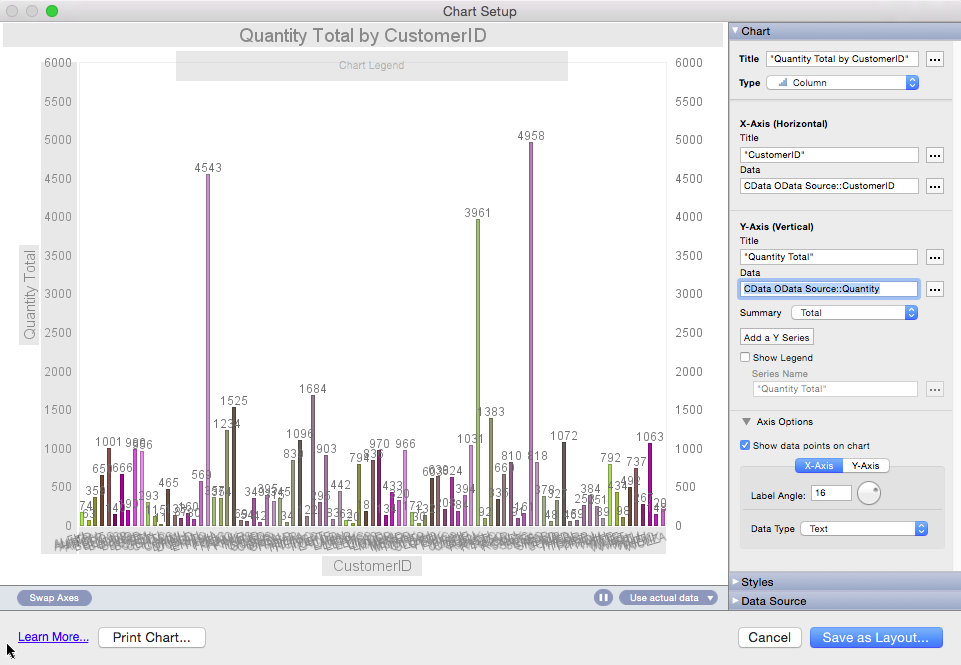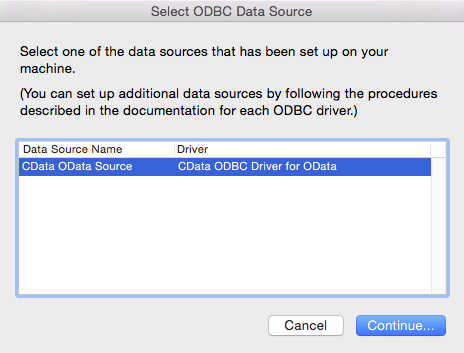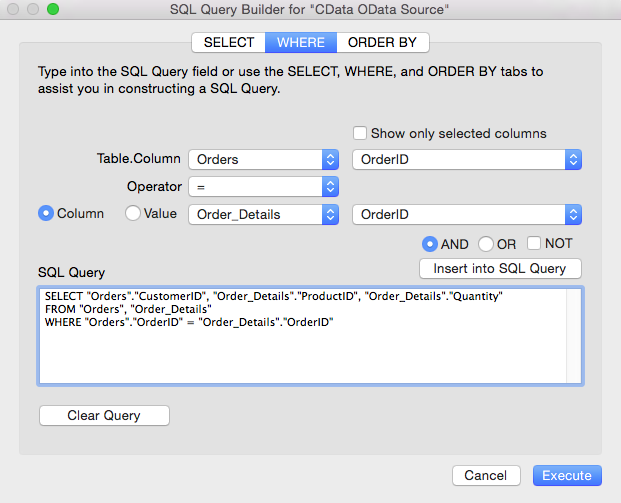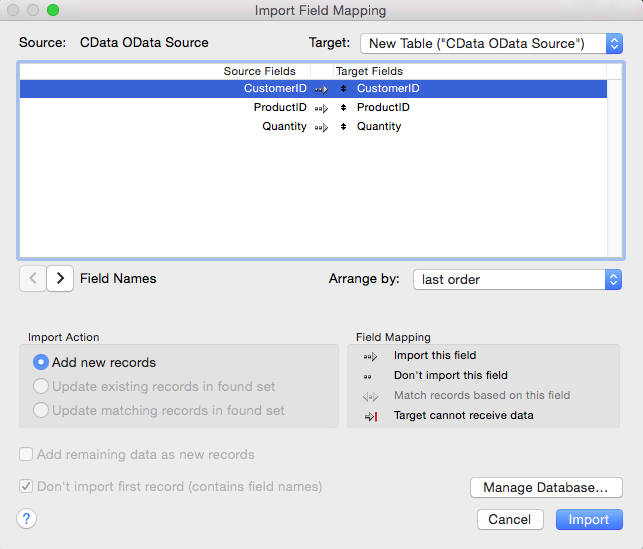Discover how a bimodal integration strategy can address the major data management challenges facing your organization today.
Get the Report →Import Elasticsearch Data into FileMaker Pro
Create reports that integrate Elasticsearch data in Filemaker Pro.
One of the strengths of the CData ODBC driver is its ubiquitous support across many applications and platforms. In this article, you will configure the ODBC driver in FileMaker Pro and create data visualizations with Elasticsearch data.
About Elasticsearch Data Integration
Accessing and integrating live data from Elasticsearch has never been easier with CData. Customers rely on CData connectivity to:
- Access both the SQL endpoints and REST endpoints, optimizing connectivity and offering more options when it comes to reading and writing Elasticsearch data.
- Connect to virtually every Elasticsearch instance starting with v2.2 and Open Source Elasticsearch subscriptions.
- Always receive a relevance score for the query results without explicitly requiring the SCORE() function, simplifying access from 3rd party tools and easily seeing how the query results rank in text relevance.
- Search through multiple indices, relying on Elasticsearch to manage and process the query and results instead of the client machine.
Users frequently integrate Elasticsearch data with analytics tools such as Crystal Reports, Power BI, and Excel, and leverage our tools to enable a single, federated access layer to all of their data sources, including Elasticsearch.
For more information on CData's Elasticsearch solutions, check out our Knowledge Base article: CData Elasticsearch Driver Features & Differentiators.
Getting Started
Query Elasticsearch Data in FileMaker Pro
If you have not already, first specify connection properties in an ODBC DSN (data source name). This is the last step of the driver installation. See the "Getting Started" chapter of the help documentation for a guide to creating a DSN on Windows or Unix-based systems like Mac OS X and Linux.
Set the Server and Port connection properties to connect. To authenticate, set the User and Password properties, PKI (public key infrastructure) properties, or both. To use PKI, set the SSLClientCert, SSLClientCertType, SSLClientCertSubject, and SSLClientCertPassword properties.
The data provider uses X-Pack Security for TLS/SSL and authentication. To connect over TLS/SSL, prefix the Server value with 'https://'. Note: TLS/SSL and client authentication must be enabled on X-Pack to use PKI.
Once the data provider is connected, X-Pack will then perform user authentication and grant role permissions based on the realms you have configured.
When you configure the DSN, you may also want to set the Max Rows connection property. This will limit the number of rows returned, which is especially helpful for improving performance when designing reports and visualizations.
You can then load Elasticsearch data into tables in Filemaker Pro:
-
In your solution, click File -> Import Records -> ODBC Data Source, and select the CData Elasticsearch DSN.
![CData ODBC Data Sources to be added to a FileMaker Pro database.]()
-
In the resulting SQL Query Builder wizard, select tables and columns and then click Insert into SQL Query. You can edit this query directly. For example:
SELECT Orders.Freight, Customers.ContactName FROM Customers INNER JOIN Orders ON Customers.CustomerId=Orders.CustomerIdYou can use the UI to build filters in the WHERE clause by clicking the WHERE tab.
![The import query defined in the SQL Query Builder. (OData is shown.)]()
-
In the resulting Import Field Mapping wizard, you can define mappings from columns in the data source to the columns in a destination table. To create a new table for the query results, select New Table ("CData Elasticsearch Source") from the Target box, and click Import.
![Mappings for a new table. (OData is shown.)]()
For more information on the SQL that the driver supports out of the box, see the help documentation.
Process Data at Design Time
You can sort and aggregate data, as well as calculate summary functions, while you browse tables. To manipulate the view of data at design time, first complete the two steps below:
- Switch to Browse mode: Click the Mode pop-up menu in the footer of the application.
- Switch to Table view: Click the table icon in the View As menu in the main toolbar of the application.
Aggregate and Summarize
Follow the procedure below to group column values and then display a summary, as shown in the screenshot below:
- Sort: Click the arrow in the OrderName column header and then click Sort Ascending in the resulting menu.
- Group: In the menu for the OrderName column click Add Trailing Group by OrderName to group the values and create a subsequent row where summary calculations can be inserted. Click Add Leading Group to introduce the group with a summary.
- Summarize: In the menu for a column that has been grouped, select a summary from the Trailing Subtotals menu.
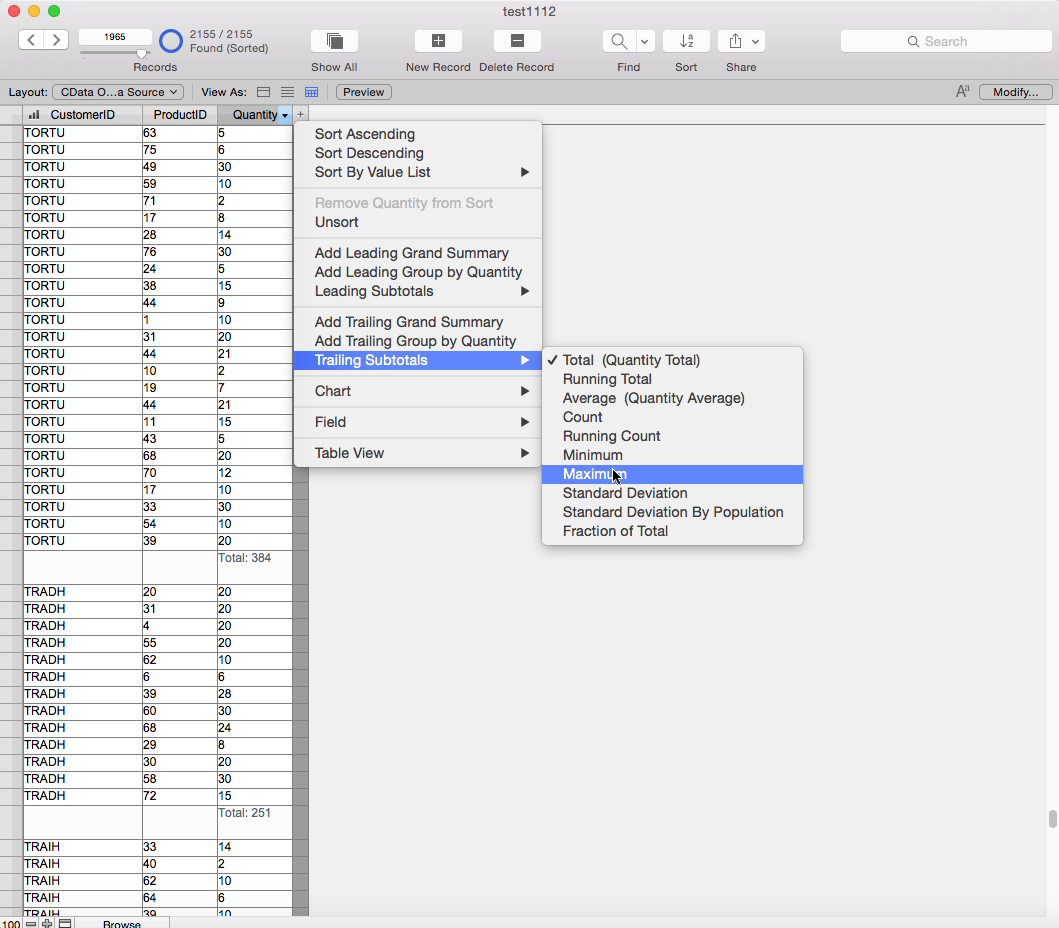
the procedure below to create a simple bar chart that shows the total Freight for each OrderName.
- Click the arrow in the Freight column header and click "Chart by Freight" in the menu. If you have already grouped on a column in the Table view, OrderName, for example, you can select the option to chart Freight by OrderName.
- In the Chart Setup window, select columns to draw the chart: To add the column for the x-axis, click the button next to the Data box.
Selecting the x-axis and y-axis will draw the chart. You can also process data in the Chart Setup: Set the following options to create a basic chart.
- Click the button next to the Data box and select Specify Field Value. Select a column in the resulting dialog.
- Select a summary for the y-axis in the Summary menu.
